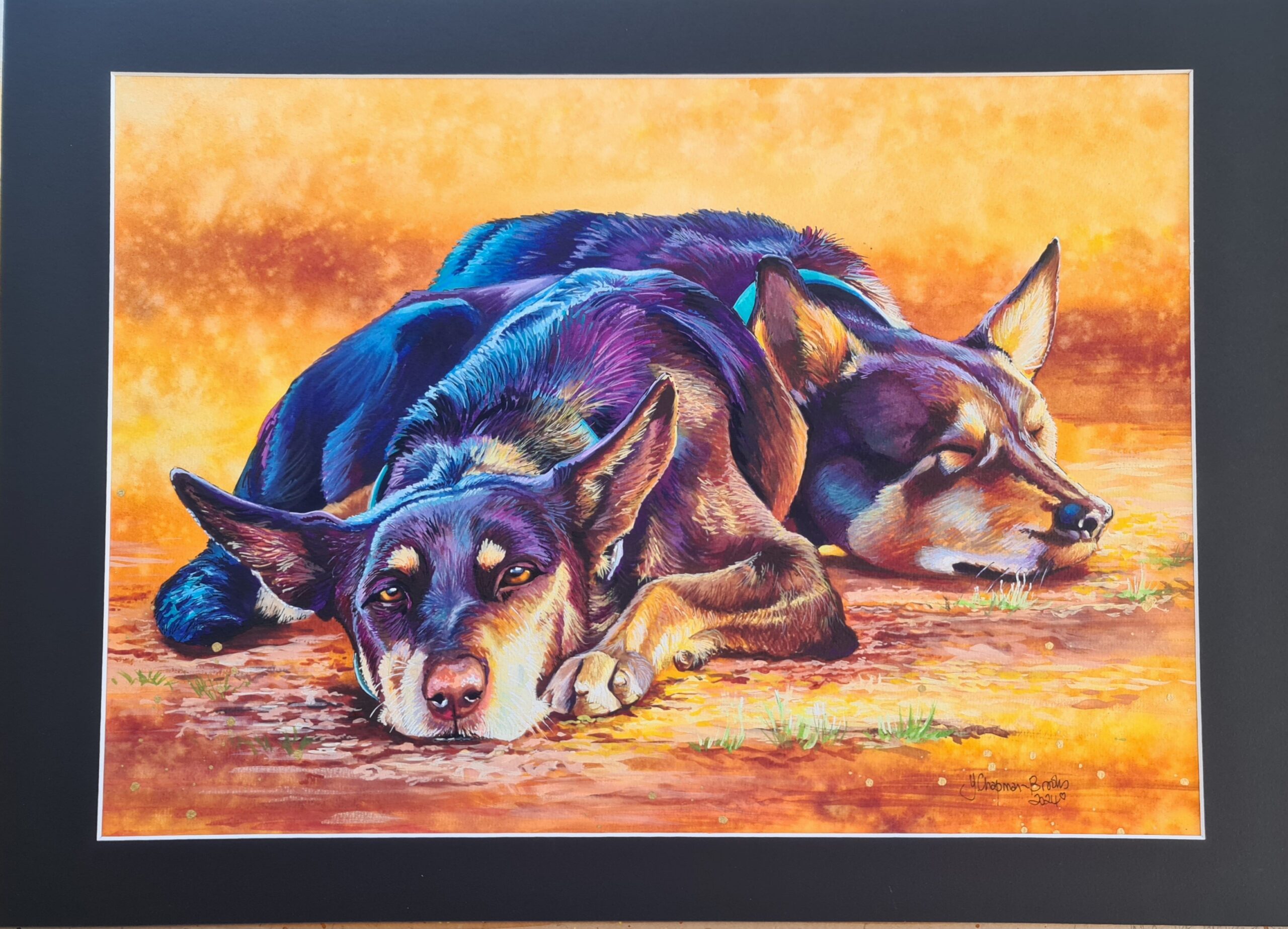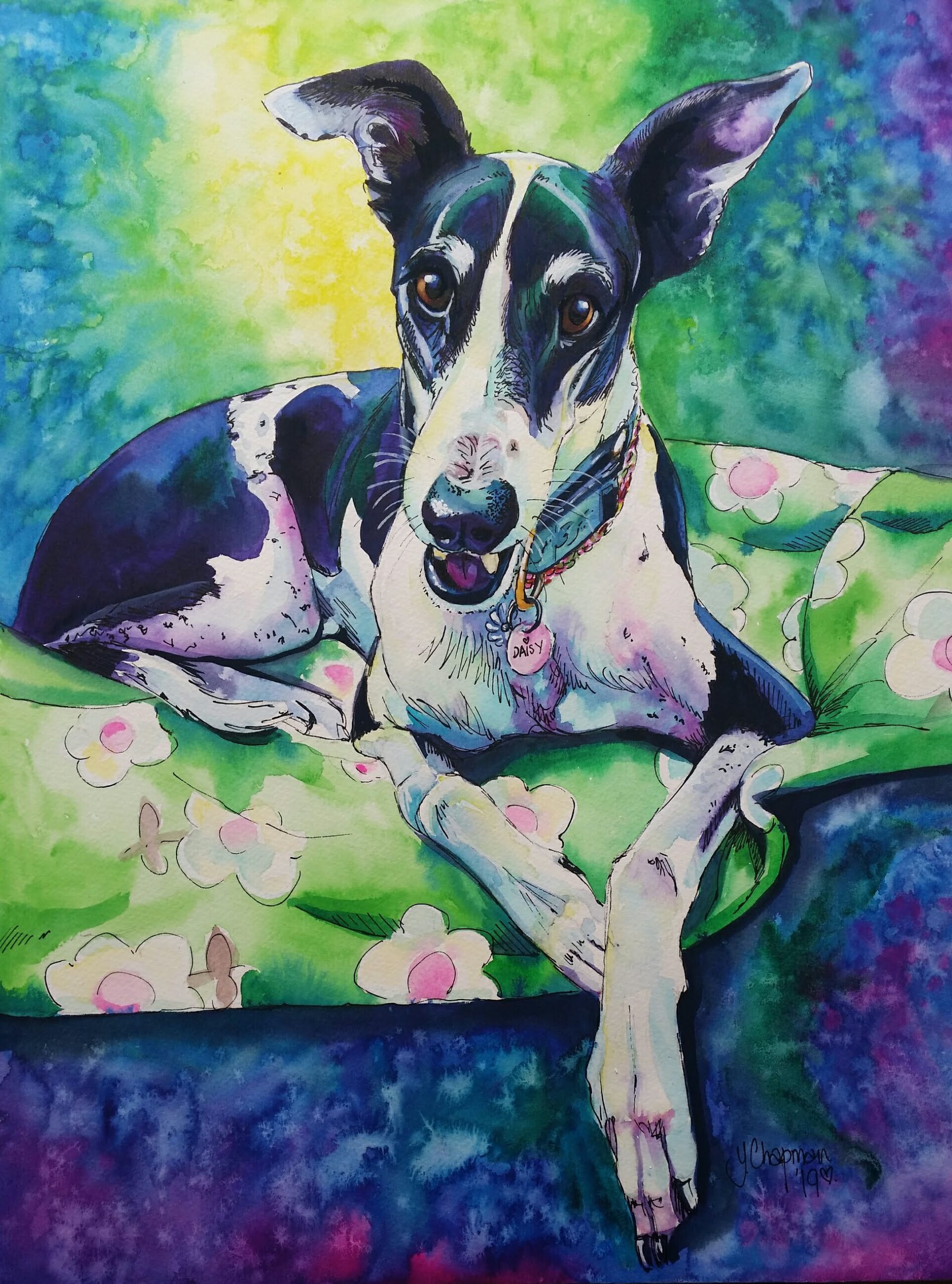
“It’s Time.” Goodnight Daisy
“It’s Time” Goodnight Daisy. Daisy was my introduction to the wonderful world of rescued greyhounds. I adopted her through GAP, Perth, when she was just

“It’s Time” Goodnight Daisy. Daisy was my introduction to the wonderful world of rescued greyhounds. I adopted her through GAP, Perth, when she was just

This is the story of how were adopted by a beautiful white Boxer dog, and how she loved life and everyone in it. Years ago,

A painting for the Cossack Art Awards 2024 “When the working day is done” Cruise and Diamond Pilbara Working Dogs. This is my watercolour entry
Day One Paint your Pet workshop for march 2024 was another successful weekend, with 4 students all creating wonderful pieces of artwork. My studio is

For the love of a greyhound Its no secret that I love Greyhounds. It started 11 years ago when I fostered my very first greyhound,

Time to buy your Christmas cards Its time to think about the festive season again, I’m sure it comes around quicker every year. This year
One Last Look, a watercolour portrait One Last Look was a painting I recently finished after having a slight doubt in my artistic abilities. For
“Paint your pet in Watercolour,” held in May 2023, was once again a very successful workshop. A beautiful weekend was forecast so the stretching paper
“Paint your pet” workshop Teaching art is my something I love to do, combine this with teaching you how to paint using my signature style

Get in touch with Yvonne to book your own commission today!